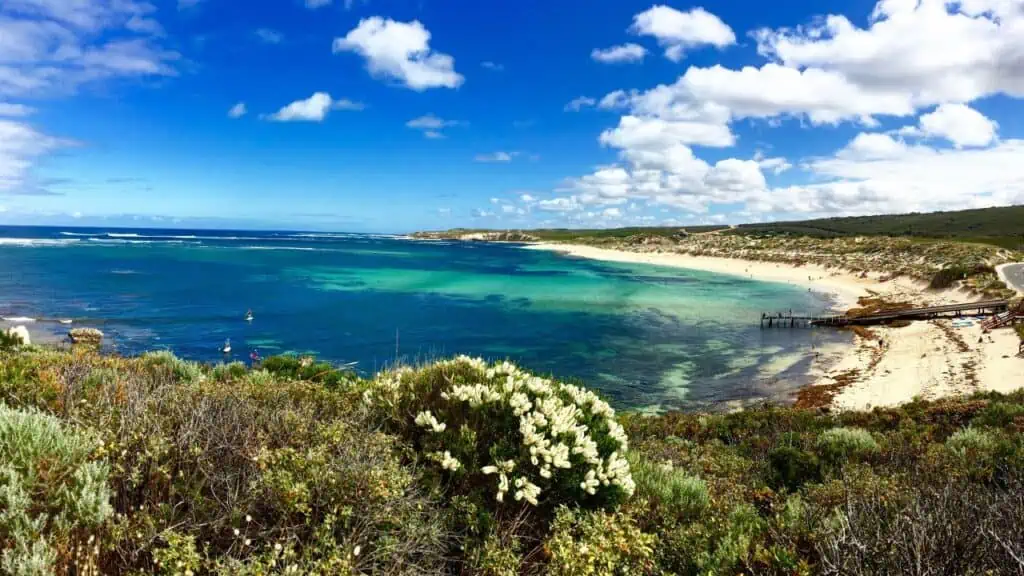Australia has one of the best tertiary education systems in the world, with many of the country’s schools regularly appearing in the “top 100” rankings. It’s only fair to think that university education in the country would be expensive due to the quality you’re getting.
The government subsidizes university education, and admission is strictly by merit. However, many students, especially international students, don’t know the extent and opine that university education in the country is free.
This article will educate you on all you need to know about paying for university in Australia. You’ll understand whether or not education is free in the country. It would also educate you on your best shot at getting free education in Australia.
Is University Free in Australia?
Blatantly put, University education isn’t free in Australia. However, some Australian universities are commonwealth-supported, meaning that the government covers a part of the tuition fee.
Even though you only have to pay part of the tuition, it’s still expensive. However, you should note that the amount you’ll pay depends on your program of study. Basic arts and science programs are on the low side, while degrees like law and medicine are on the high side. You must pay the student’s contribution upfront before starting the degree.
You can decide to be a fee-paying student. This statement means you’ll cover your tuition fees, including other expenses like accommodation and education materials.
Being a domestic fee-paying student is almost impossible because the Australian government phased it out in 2009 to ensure that admissions are on merit. If you’re an international student, chances are high that you’ll be a full-paying student unless you’re on a scholarship.
What Are HELP Loans?
If you can’t afford the student contribution, you can defer it using the HELP loans. It means the government will cover the fee for you while earning a certain amount of taxable income (repayment threshold) when you graduate. The repayment threshold as of 2024 is $51,550.

There are four different types of HELP loans. The first is the HECS-HELP loan. It covers your actual student contribution amount. You must be an Australian citizen studying in a commonwealth place, hold a New Zealand Special Category Visa, or be a permanent humanitarian Visa holder to access this HELP loan.
The FEE-HELP is the second option, and you can use it to settle your fees if you’re a fee-paying student. You should note that the loan doesn’t cover expenses like laptop, accommodation, or books. It has similar requirements to the HECS-HELP loan.
You can also access the SA-HELP loan to pay for your student’s service or amenities like food, financial advice, and child care. The maximum SAF you can charge in 2024 is $263.25. It also has similar requirements to the other loans mentioned above.
The final loan is the OS-HELP loan. Students enrolled in a commonwealth-supported place but want to study some of their courses overseas can access it. The provider will give you the loan directly so that you can use it to fund your overseas study.
How Much is University Tuition in Australia?
Domestic students studying law, accounting, economics, commerce, society & culture, communications, and accounting have a maximum tuition of $15,142.
Dentistry, medicine, or veterinary science are around $11,800 for new and old students. Other courses have lesser tuition, with Education, English, Nursing, Indigenous and Foreign Language, and the likes having the lowest at $4,124 for new and returning students.
Fee-paying students can pay from $78,000 to $130,000 for a 4-years arts degree. You’ll need to pay more if you want a Bachelor of Arts and Law, potentially up to $250,000, with the minimum at around $150,000. Medical degrees are the most expensive and costs $190,000-$320,000.
Living Expenses for Students in Australia
Understand that the tuition doesn’t cover your cost of living and other expenses. You might also need to pay for Overseas Student Health Cover. If you add all these costs, it’s a fortune on their own.
Accommodation for students depends on where you live. The rural regions of the country cost less than urban ones like Sydney. Also, it’s subject to whether you want on-campus, homestay, or shared rental accommodation. You should prepare around $440-$1760 monthly for accommodation.
Utility and transportation costs are other expenses. Don’t forget that Student Services and Amenities; are usually around $315. The authorities won’t grant you an Australian student Visa unless you can prove that you have $21,041 for living expenses to cover your first two years there.
How to Study for Free in Australia
The most realistic way to study for free in Australia is if you’re on a full scholarship. Most Australian scholarship options available for international students are for postgraduates. However, that doesn’t mean you can’t find decent scholarships for undergraduates to study in the country.

Some of the best scholarship programs for postgraduates include the Endeavor Postgraduate Leadership Awards, the University of Sydney International Research Scholarships, and Adelaide Scholarships International. The individual universities are the ones that offer most of the scholarship options for international students.
The Australian Awards is one of Australia’s best fully funded undergraduate scholarships. One of its criteria is that you mustn’t be a permanent resident of Australia or New Zealand.
The Destination Scholarship is another option that undergraduate international students can consider. Macquarie University’s Vice Chancellor scholarship will also relieve you of a substantial part of your tuition amount.
The University of Sydney and many others in the state have scholarship options for local students. Check out specific universities’ websites to know the details.
Save Money while Studying in Australia
There are ways that you could save money while studying in Australia. One of the best ways to do so is to get an ISIC card. It costs around $4-$25 and symbolizes your studentship status. You can get a discount on purchases at restaurants, cafes, groceries, and even international airfares.
You can get a part-time job while studying to ensure that you don’t run out of money to spend. Plan your budget carefully and avoid unnecessary spending. Look for cheap student accommodation near your university so you won’t need to spend too much on transport.
Conclusion
University education isn’t free in Australia, but domestic students don’t have to pay their entire tuition fee if they’re in a commonwealth-supported place. You can defer your student contribution with the HECS-HELP loan. The FEE-HELP loan lets you defer your payment if you’re a fee-paying student.
You can also explore the numerous scholarship options, as they can help you save money. If you’re applying for any scholarship, you should read and understand the terms and conditions carefully. Some fully funded scholarships, while others only cover part of your tuition fees.
Resource:

Sam is a brilliant young Nigerian biochemistry student and an aspiring entrepreneur. Despite facing many challenges, he has never lost his passion for learning and drive to make a difference in the world. Read more about him here.